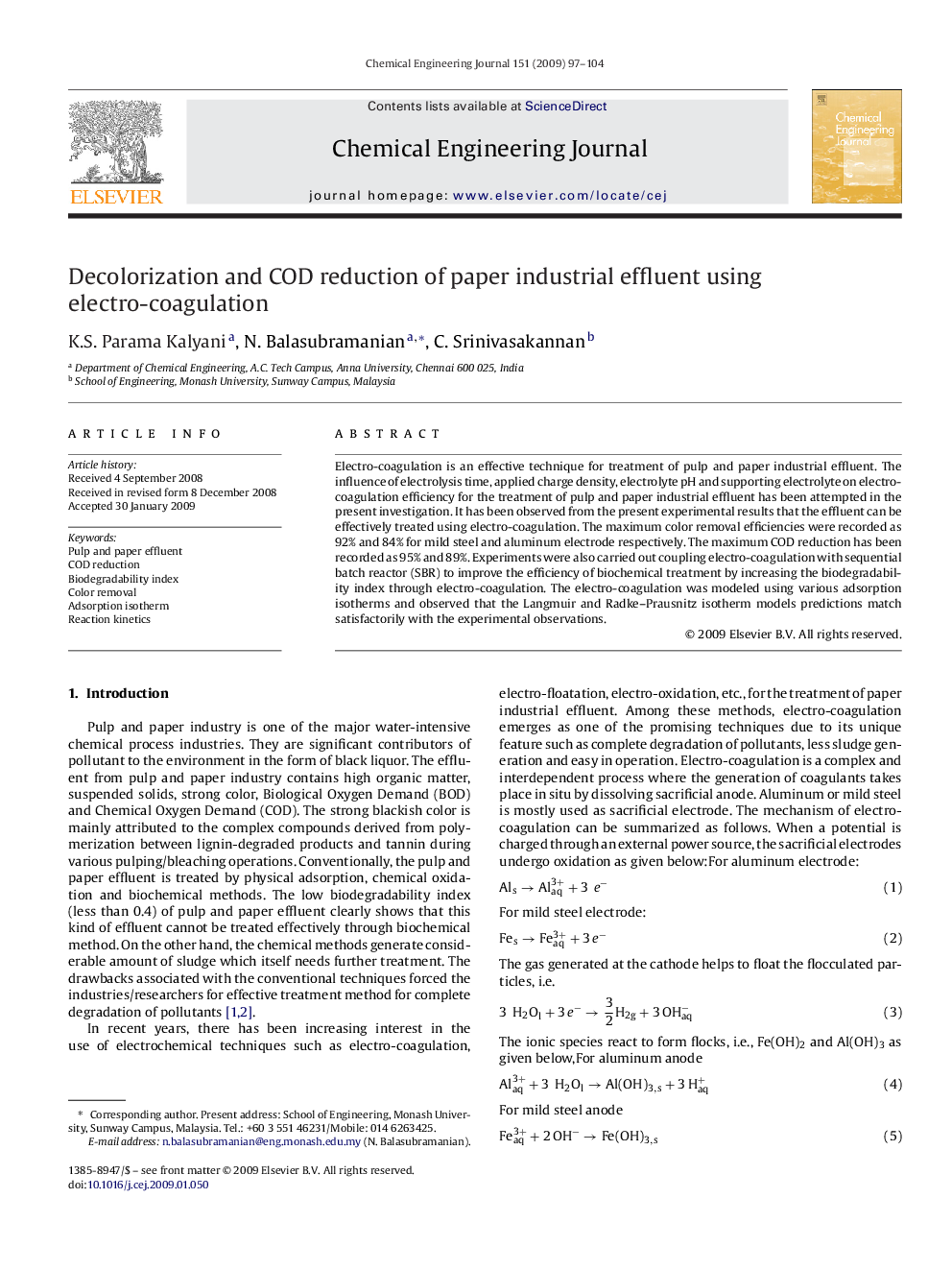| Article ID | Journal | Published Year | Pages | File Type |
|---|---|---|---|---|
| 152359 | Chemical Engineering Journal | 2009 | 8 Pages |
Electro-coagulation is an effective technique for treatment of pulp and paper industrial effluent. The influence of electrolysis time, applied charge density, electrolyte pH and supporting electrolyte on electro-coagulation efficiency for the treatment of pulp and paper industrial effluent has been attempted in the present investigation. It has been observed from the present experimental results that the effluent can be effectively treated using electro-coagulation. The maximum color removal efficiencies were recorded as 92% and 84% for mild steel and aluminum electrode respectively. The maximum COD reduction has been recorded as 95% and 89%. Experiments were also carried out coupling electro-coagulation with sequential batch reactor (SBR) to improve the efficiency of biochemical treatment by increasing the biodegradability index through electro-coagulation. The electro-coagulation was modeled using various adsorption isotherms and observed that the Langmuir and Radke–Prausnitz isotherm models predictions match satisfactorily with the experimental observations.
